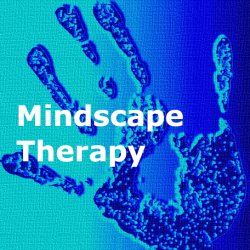- Mindscape Therapy provides art psychotherapy services to promote the psychological well-being of children, young people, and adults.
- Mindscape implements clinical programmes to address the growing need for psychotherapeutic intervention for children, young people, and adults who are struggling with their mental wellbeing
- We provide education, training programmes, and clinical supervision to support professionals working with vulnerable populations
Aim of Policy Statement
- To protect children and young people who receive Mindscape’s services from harm. This includes the children of adults who use our services
- To provide staff and volunteers, as well as children and young people and their families, with the overarching principles that guide our approach to child protection.
- This policy applies to anyone working on behalf of Mindscape.
Legal framework
This policy has been drawn up on the basis of legislation, policy, and guidance that
seeks to protect children in England. A summary of the key legislation and guidance is available from nspcc.org.uk/childprotection.
The Department for Education (DfE) is responsible for child protection in England. It sets out the policy, legislation, and statutory guidance on how the child protection system should work.
Local safeguarding partners are responsible for child protection policy, procedure and guidance at a local level.
Local Safeguarding Partners
- the local authority
- the integrated care board (ICB, previously clinical commissioning group or ‘CCG’)
- the police.
- Working together with other relevant agencies, they must coordinate and ensure the effectiveness of work to protect and promote the welfare of children, including making arrangements to identify and support children at risk of harm.
Our Responsibilities
- Children and young people should never experience abuse of any kind
- We have a responsibility to promote the welfare of all children and young people, to keep them safe, and to practice in a way that protects them.
We recognise that
- The welfare of children is paramount in all the work we do and in all the decisions we take
- Working in partnership with children, young people, their parents, carers and other agencies is essential in promoting young people’s welfare
- All children, regardless of age, disability, gender reassignment, race, religion or belief, sex, or sexual orientation have an equal right to protection from all types of harm or abuse
- Some children are additionally vulnerable because of the impact of previous experiences, their level of dependency, communication needs, or other issues
- Extra safeguards may be needed to keep children who are additionally vulnerable safe from abuse.
Actions to keep children and young people
safe:
- Valuing, listening to, and respecting children, young people and adults
- Appointing a nominated child protection lead for children and young people
- Adopting child protection and safeguarding best practices through our policies procedures, and code of conduct for staff and volunteers
- Developing and implementing an effective online safety policy and related procedures
- Providing effective management for staff and volunteers through supervision, support, training, and quality assurance measures so that all staff and volunteers know about and follow our policies, procedures, and behaviour codes confidently and competently recruiting and selecting staff and volunteers safely, ensuring all necessary checks are made
- Recording and storing and using information professionally and securely, in line with data protection legislation and guidance [more information about this is available from the Information Commissioner’s Office: ico.org.uk/for organisations
- Sharing information about safeguarding and good practice with children and their families via leaflets, posters, group work, and one-to-one discussions
- Make sure that children, young people, and their families know where to go for help if they have a concern
- Using our safeguarding and child protection procedures to share concerns and relevant information with agencies who need to know, and involving children, young people, parents, families, and carers appropriately using our procedures to manage any allegations against staff and volunteers appropriately
- Creating and maintaining an anti-bullying environment and ensuring that we have a policy and procedure to help us deal effectively with any bullying that does arise
- Ensuring that we have effective complaints and whistleblowing measures in place
- Ensuring that we provide a safe physical environment for our children, young people, staff, and volunteers, by applying health and safety measures in accordance with the law and regulatory guidance
- Building a safeguarding culture where staff and volunteers, children, young people, and their families, treat each other with respect and are comfortable about sharing concerns
Contact details
Nominated child protection lead
Name: Andrew C Wright
Email: andrew@arttherapyscape.com
Find out more about:
• safeguarding children who come from Black, Asian, and minoritised
ethnic communities
• safeguarding d/Deaf and disabled children and young people
• safeguarding LGBTQ+ children and young people
• safeguarding children with special educational needs and disabilities
(SEND).

